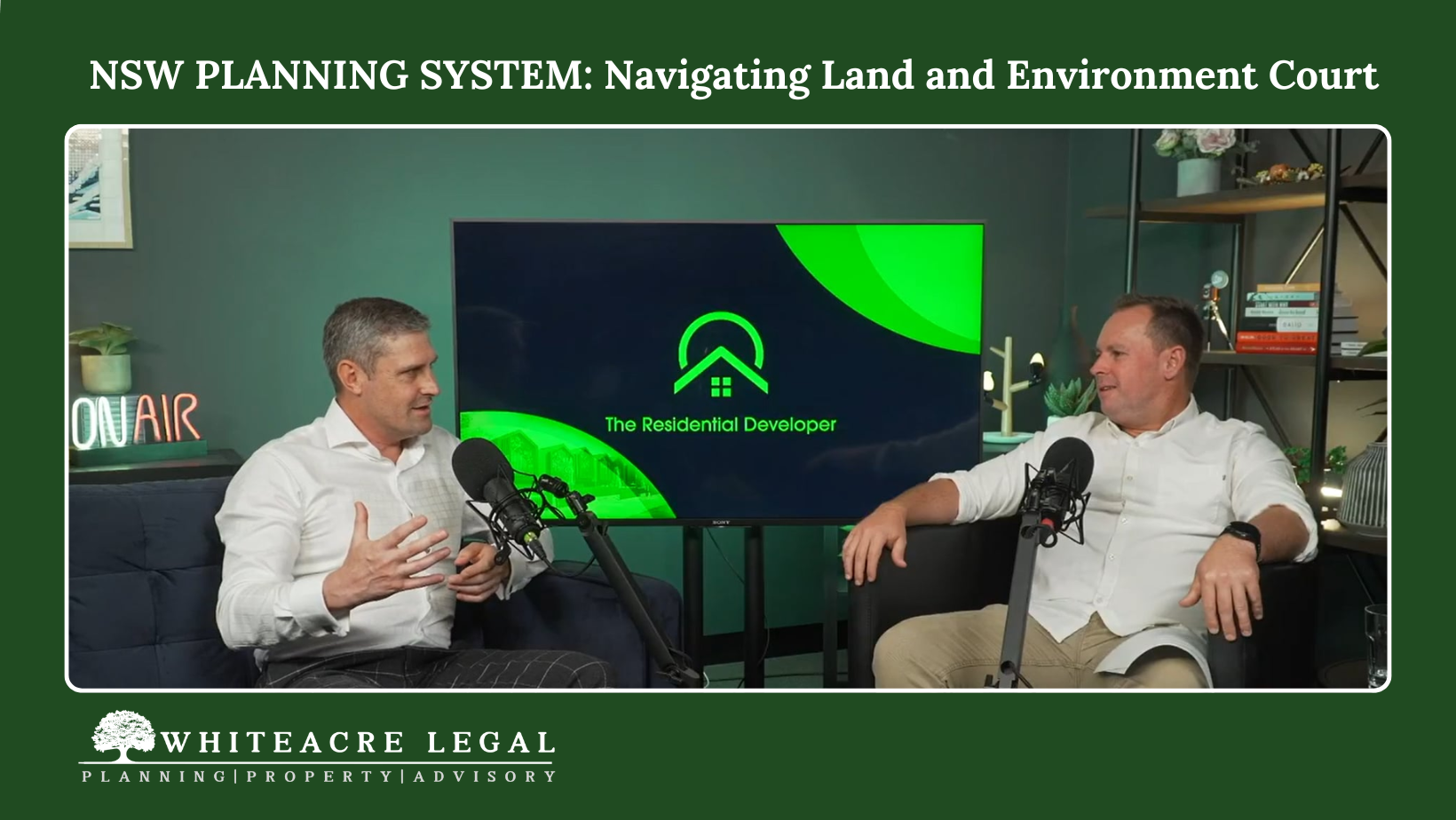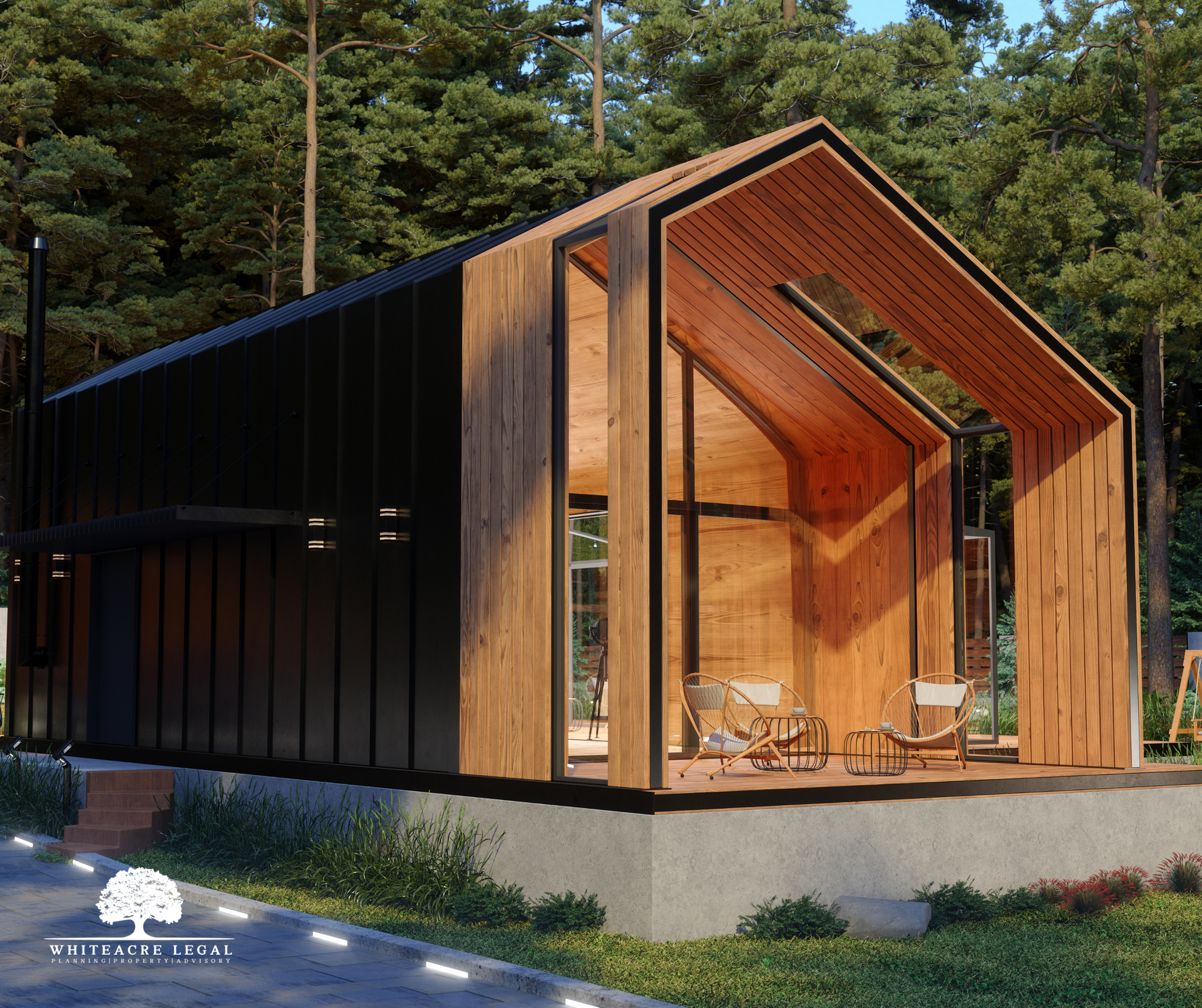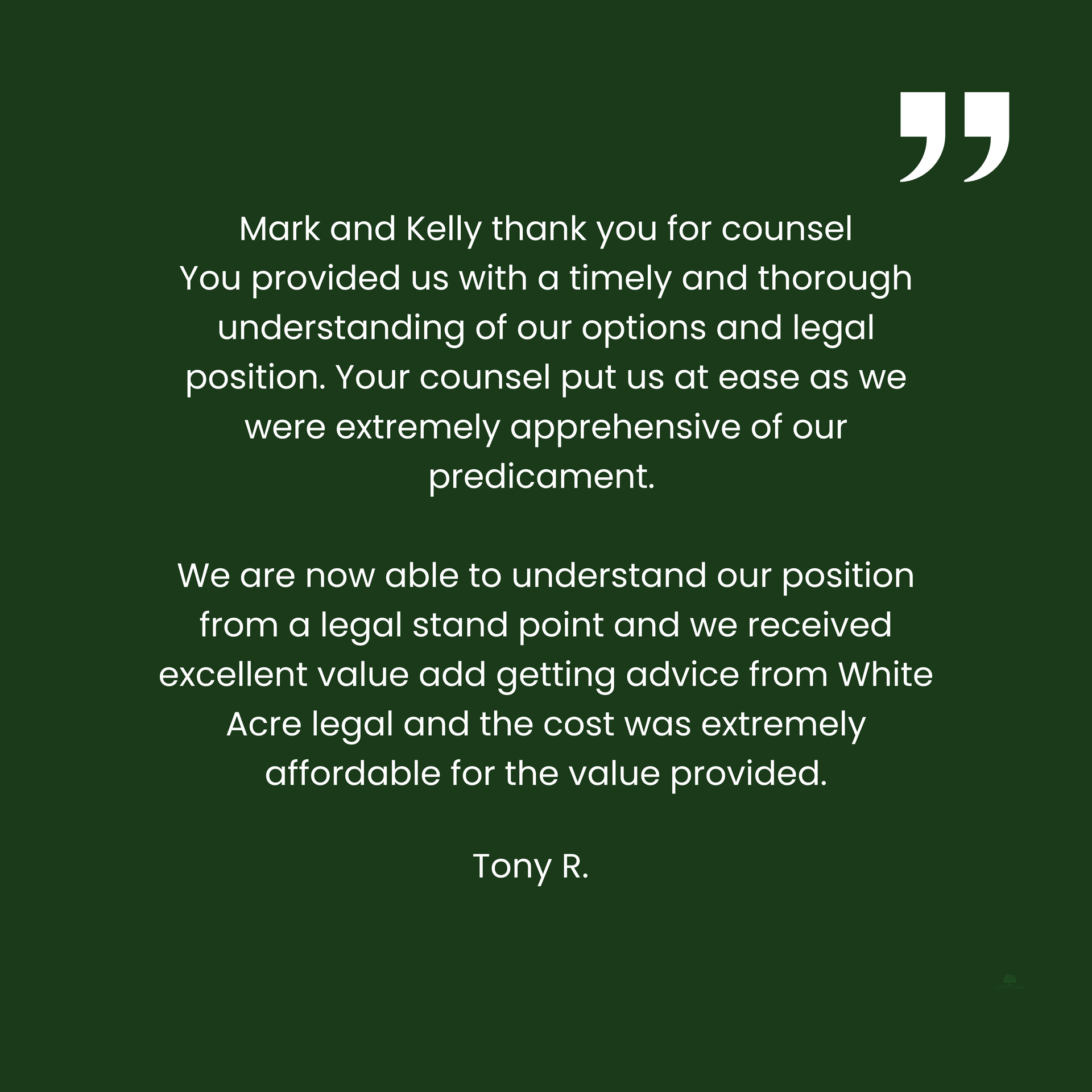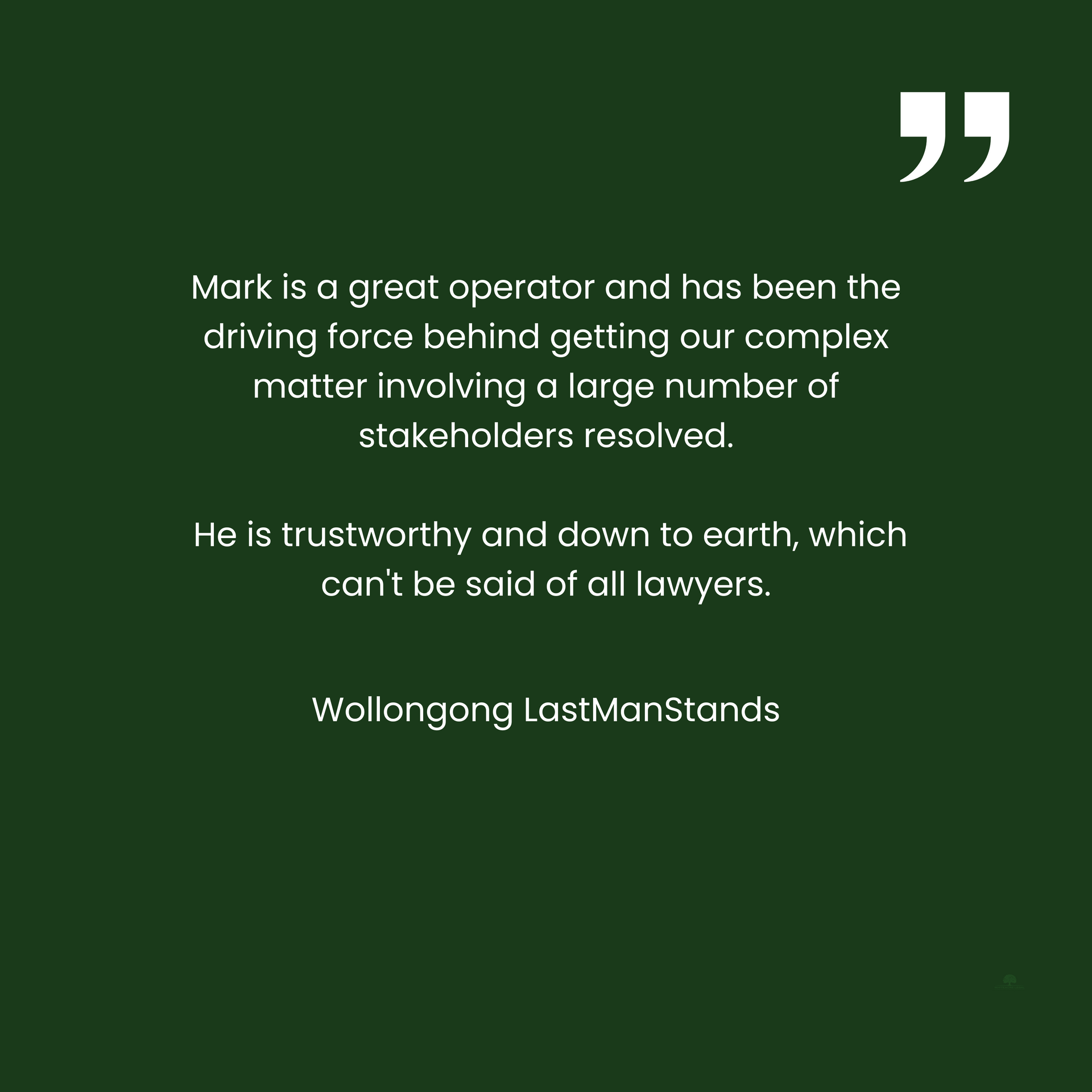What is the meaning of “substantially the same” development?
Development consents can be modified, within reason. The modified development must be “substantially the same” as the development originally approved. This article considers the meaning of the phrase “substantially the same” and examines cases in which the question has arisen.
Power to modify is subject to constraints
There are a number of sources of power to modify a development consent under s 4.55 of the Environmental Planning and Assessment Act 1979 (EPA Act):
- Modifications to correct a minor error, misdescription or miscalculation: s 4.55(1);
- Modifications involving minimal environmental impact: s 4.55(1A); and
- Other modifications: s 4.55(2).
Sections 4.55(1A) and (2) of the EPA Act empower a consent authority to modify a development consent, provided the consent authority is satisfied that the development to which the consent as modified relates is substantially the same development as the development for which the consent was originally granted and before that consent as originally granted was modified (if at all).
What does substantially the same mean?
Unfortunately, there is no clear, simple answer. Like many things in life, and in planning law, the answer depends a lot on the circumstances of each case. However, there are some guiding principles that can be drawn from the case law.
“The requisite factual finding obviously requires a comparison between the development, as currently approved, and the development as proposed to be modified. The result of the comparison must be a finding that the modified development is “essentially or materially” the same as the (currently) approved development.
The comparative task does not merely involve a comparison of the physical features or components of the development as currently approved and modified where that comparative exercise is undertaken in some type of sterile vacuum. Rather, the comparison involves an appreciation, qualitative, as well as quantitative, of the developments being compared in their proper contexts (including the circumstances in which the development consent was granted).” Moto Projects No 2 Pty Limited v North Sydney Council [1999] 106 LGERA 298 per Bignold J at [55]-[56].
Principles from case law
1. First, the essential elements to be identified are not of the development consent itself, but of the development that is the subject of that development consent. The comparison required by s 4.55(2) of the EPA Act is between two developments: the development as modified and the development as originally approved: Scrap Realty Pty Ltd v Botany Bay City Council [2008] NSWLEC 333 at [16].
2. Second, the essential elements are not to be identified “from the circumstances of the grant of the development consent”; they are to be derived from the originally approved and the modified developments. It is the features or components of the originally approved and modified developments that are to be compared in order to assess whether the modified development is substantially the same as the originally approved development: Arrage v Inner West Council [2019] NSWLEC 85 per Preston CJ at [25]
3. In approaching the comparison exercise, one must not fall into the trap of thinking that because the development was for a particular use and, as amended it will be for the same use, it is therefore substantially the same.
Essential and material features
4. A common method to identify whether the modified development is substantially the same is to consider whether the modified development is “essentially or materially” the same or “has the same essence” as the originally approved development. This test derives from the dicta of Bignold J in Moto Projects No 2 Pty Limited v North Sydney Council [1999] 106 LGERA 298 (Moto Projects).
“The requisite factual finding obviously requires a comparison between the development, as currently approved, and the development as proposed to be modified. The result of the comparison must be a finding that the modified development is “essentially or materially” the same as the (currently) approved development.
The comparative task does not merely involve a comparison of the physical features or components of the development as currently approved and modified where that comparative exercise is undertaken in some type of sterile vacuum. Rather, the comparison involves an appreciation, qualitative, as well as quantitative, of the developments being compared in their proper contexts (including the circumstances in which the development consent was granted).”
However, caution should be applied here. This test derives from judicial interpretations of the statutory test, not the language of the statute itself.
The language of the statute (and thus the test) is:
“(a) [the consent authority must be] satisfied that the development to which the consent as modified relates is substantially the same development as the development for which consent was originally granted and before that consent as originally granted was modified (if at all)…”
In Arrage, Preston CJ held at [28] (referring to the Moto Projects “test”):
“That is one way, probably in most cases the most instructive way, to identify whether the modified development is substantially the same development as the originally approved development, but it is not the only way to ascertain whether the modified development is substantially (in the sense of essentially or materially) the same development as the originally approved development. For example, comparison could be made of the consequences, such as the environmental impacts, of carrying out the modified development compared to the originally approved development: see Moto Projects at [62] and Tipalea Watson Pty Ltd v Ku-ring-gai Council (2003) 129 LGERA 351; [2003] NSWLEC 253 at [17].”
So while the “essential and material features” test is a good guide, it will not always be the best test to apply. To understand this better, it is helpful to review some of the cases in which the question has arisen and the factual circumstances of each case.
Case law
Moto Projects No 2 Pty Limited v North Sydney Council [1999] 106 LGERA 298
Facts
The original consent was granted (by the Court) in 1998 to refurbish the existing North Sydney Club premises and add four to six floors to the existing building to provide for 48 residential apartments. The Applicant sought to modify the development consent by altering the vehicular access requirements by removing conditions of the consent relating to a vehicular ramp for entering traffic to the club premises.
Council argued that the modification application should fail because the Court could not be satisfied that the development was substantially the same development. That is, the alteration to the access arrangements was so material and fundamental that it altered the development to such an extent that it was no longer substantially the same.
The Applicant argued that the modified development would be substantially the same as the original development since:
- the relevant comparison yields precisely the same components of the redevelopment, namely (i) a refurbished club; (ii) an addition comprising 48 residential flats; and (iii) the existing on-site carparking provision,
- the only difference being the elimination of the access ramp for vehicular traffic to the club’s on-site carparking provision from the Warringah Expressway and instead of that arrangement, an accommodation of that entering traffic within the Walker Street right of way (ROW).
Findings
Bignold J held that the Walker Street ROW (access arrangement) was a material and essential feature of the approved development and its removal meant that the modified development could not be considered to be substantially the same.
The modification application was refused.
Importantly, Bignold J held that the assessment needed to be both qualitative as well as quantitative. Applicants cannot simply point to numerical comparisons in a vacuum or a “broader picture” which omits important material details of the development.
55. The requisite factual finding obviously requires a comparison between the development, as currently approved, and the development as proposed to be modified. The result of the comparison must be a finding that the modified development is “essentially or materially” the same as the (currently) approved development.
56. The comparative task does not merely involve a comparison of the physical features or components of the development as currently approved and modified where that comparative exercise is undertaken in some type of sterile vacuum. Rather, the comparison involves an appreciation, qualitative, as well as quantitative, of the developments being compared in their proper contexts (including the circumstances in which the development consent was granted).
64. Although it is well established that the comparative task required to be undertaken to satisfy the requirement of s 96(2)(a) involves a comparison of the whole of the developments being compared, that fact does not eclipse or cause to be eclipsed a particular feature of the development, particularly if that feature is found to be important, material or essential. This approach is exemplified in the decision of Talbot J in The Satellite Group (Ultimo) Pty Ltd v Sydney City Council (unreported 2 October 1998) where Talbot J held that the statutory modification power was not available because his Honour had not been satisfied that the development as proposed to be modified would be substantially the same as the currently approved development.
…
68. I would respectfully agree with his Honour’s views. They have obvious application to the facts of the present case, where the only change involves the elimination of the separate ramp access from Warringah Expressway providing exclusive vehicular ingress to the Club’s on-site carparking provision, where for the reasons I have given, that access arrangement was a material and essential feature of the approved development.
69. Its entire elimination, with the consequence of all traffic to the redevelopment having to use the Walker Street ROW, materially changes the approved development to such an extent, that I am not satisfied that the modified development is substantially the same as the currently approved development.
Key Takeaways
- The result of the comparison between the modified development and the original development must be a finding that modified development is “essentially or materially” the same.
- The assessment needs to be both qualitative and quantitative comparison of the development in its proper context.
- Key elements of the original development need to be considered and a “big picture” justification of the development as a whole, omitting material details, is not correct.
Arrage v Inner West Council [2019] NSWLEC 85
Facts
The Applicant sought to modify a consent for shop-top housing at Dulwich Hill pursuant to 4.55(2) of the EPA Act. Council refused the application.
The appeal was heard by a Commissioner of the LEC who refused the application and dismissed the appeal on the grounds that he was not satisfied that the development was substantially the same as the development for which consent was granted.
The Commissioner identified that the proposed modification would result in the following quantitative changes:
- a 30% increase in the number of residential units (from 13 units to 17 units);
- a 19.25% increase in the floor space ratio (“FSR”) for the modified development;
- a 13.5% increase in building height (from 22.3m to 25.3m);
- a 14.3% increase in the number of storeys (from a part 5/part 6 storey development to a part 6/part 7/part 8 storey development);
- a 17.3% (25.1sqm) reduction in common open space (from 145.1sqm to 120sqm); and
- a 100% (42.53sqm) reduction in internal communal room space (all of the internal communal room space would be removed by the proposed modification).
The qualitative changes that the Commissioner identified were the changes from having a mix of internal communal room space and outdoor communal open space to only having communal open space and from reducing in total the communal space available, which changes qualitatively altered the utility of the communal space.
Arrage appealed the Commissioner’s decision.
His Honour Preston CJ dismissed the appeal (and upheld the Commissioner’s decision) for the following reasons.
Findings
[18] … The “test” the Commissioner was obliged to apply was not some dicta of Bignold J in Moto Projects, but rather the statutory provision of s 4.55(2)(a) of the EPA Act. Judicial decisions interpreting similar or identical legislative provisions may guide, but cannot control, the meaning of the legislative provision to be construed and applied by the Court. Judicial decisions are not substitutes for the text of the legislation, although by reason of the doctrine of precedent and the hierarchical nature of the court system, particular courts may be bound to apply the decision of a particular court as to the meaning of legislation: Walker Corporation Pty Ltd v Sydney Harbour Foreshore Authority (2008) 233 CLR 259; [2008] HCA 5 at [31].
[19] Bignold J did suggest in Moto Projects that the comparative exercise required by the former s 96(2), now s 4.55(2), of the EPA Act involves a comparison of the proposed modified development and the originally approved development “in their proper contexts (including the circumstances in which the development consent was granted)”, but this did not substitute a different or additional test for the test imposed by the statutory provision giving the power to modify a development consent. The test remained that stated in the statutory provision that the modified development “is substantially the same development” as the originally approved development.
[20] Accordingly, the Commissioner was not bound by the terms of s 4.55(2)(a) to compare the modified development and the originally approved development “in their proper contexts (including the circumstances in which the development consent was granted)”. Insofar as the Commissioner might be seen not to have given consideration to the circumstances in which the development consent was granted, that did not involve him failing to apply the correct test: he was not obliged in law to do so.
[24] First, the essential elements to be identified are not of the development consent itself, but of the development that is the subject of that development consent. The comparison required by s 4.55(2) is between two developments: the development as modified and the development as originally approved: see Scrap Realty Pty Ltd v Botany Bay City Council (2008) 166 LGERA 342; [2008] NSWLEC 333 at [16].
[25] Second, the essential elements are not to be identified “from the circumstances of the grant of the development consent”; they are to be derived from the originally approved and the modified developments. It is the features or components of the originally approved and modified developments that are to be compared in order to assess whether the modified development is substantially the same as the originally approved development.
[26] The choice of language in the judicial decisions of “material and essential features” or a “material and essential physical element” of the development (see, for example, Moto Projects at [58], [59] and [64]) derives from judicial interpretations of the statutory test that the modified development be “substantially the same” development as the originally approved development. In Vacik Pty Ltd v Penrith City Council [1992] NSWLEC 8, p 2 Stein J interpreted the word “substantially” in the former s 102(1)(a) of the EPA Act to mean “essentially or materially or having the same essence”. That interpretation of the word “substantially” was accepted in North Sydney Council v Michael Standley & Associates Pty Ltd (1998) 43 NSWLR 468 at 475 by Mason P (with whom Sheppard AJA agreed at 403) and at 481-482 by Stein JA and in Moto Projects by Bignold J at [30] and [55].
[27] This interpretation of the statutory test that the modified development be substantially the same development as the originally approved development, that the modified development be “essentially or materially” the same or “having the same essence” as the originally approved development could support an inquiry to identify the material and essential features of the originally approved and modified developments in order to undertake the comparative exercise required, but it does not demand such an inquiry.
[28] That is one way, probably in most cases the most instructive way, to identify whether the modified development is substantially the same development as the originally approved development, but it is not the only way to ascertain whether the modified development is substantially (in the sense of essentially or materially) the same development as the originally approved development. For example, comparison could be made of the consequences, such as the environmental impacts, of carrying out the modified development compared to the originally approved development: see Moto Projects at [62] and Tipalea Watson Pty Ltd v Ku-ring-gai Council (2003) 129 LGERA 351; [2003] NSWLEC 253 at [17].
[29] But if that way is selected, then the material and essential features or elements are to be identified from the originally approved and modified developments, not from the circumstances in which the original development consent was granted.
[33] … As the Council submitted, the Commissioner undertook the comparative exercise required by identifying and comparing the material and essential elements, both quantitative and qualitative, of the modified development and the originally approved development. No misdirection is revealed in the comparative exercise undertaken by the Commissioner.
Key Takeaways
- The “essential elements” are not identified from the circumstances of the grant of consent, but from an analysis of the originally approved and modified developments.
- While Bignold J identified in Moto Projects that the comparative exercise requires a comparison of the proposed modified development and the originally approved development “in their proper contexts (including the circumstances in which the development consent was granted)”, this did not substitute a different (judicial) test for the test imposed by the statutory provision and the circumstances of the grant of the consent are not relevant. The Court is not bound by earlier precedents to consider the circumstances of the grant of the consent.
- Identifying the “essential” or “material” elements of the development could support an inquiry to identify the material and essential features of the originally approved and modified developments in order to undertake the comparative exercise required, but it does not demand such an inquiry. There are other ways to undertake the comparative exercise required.
193 Liverpool Road Pty Ltd ACN 163231810 v Inner West Council [2022] NSWLEC 1197
Facts
The original development consent was granted in 2017 for mixed use development comprising comprising one retail shop, one residential apartment and thirty-eight units of boarding house accommodation in a part three-storey, part eight-storey development.
The modification sought approval for:
- Removal of the smaller north facing communal room on level 3 and replacement with an additional boarding room increasing the total number of boarding rooms from 44 to 45;
- Moving the boarding house laundry from level 3 to the ground floor bike storage area;
- Replacing deleted bike spaces with wall mounted bicycle racks on balconies of some rooms;
- Removal of the privacy screens from the northern façade;
- Increase to the size of room 1.03 by enclosing part of the courtyard; an
- Extension of the main common room on level 3 over the space that contained the communal laundry.
Council argued that the consent authority could not be satisfied that the approved modification would be substantially the same development as the development for which consent was originally granted.
The Applicant submitted that “whilst the test in s 4.55 does not permit comparison between what it proposed and the consent as modified, it is noteworthy that following the first modification application, which increased the number of boarding rooms and deleted the one residential apartment, Council did not raise any concerns as to whether the development was substantially the same as that originally approved”.
The Applicant submitted that the Commissioner’s decision related to the first modification of the consent and that the second, third and fourth modifications were subsequently approved by the Respondent Council, each time forming the positive view that the development was substantially the same as the development for which consent was originally granted.
Commissioner Espinosa held that the development as modified was not substantially the same as the development originally approved and refused the application.
Findings and conclusion:
Proposed Modification not substantially the same
[40] I reach the conclusion that the Proposed Modification is not substantially the same as the development for which consent was originally granted. I have undertaken a comparative task which involved an appreciation, qualitative, as well as quantitative, of the developments being compared, including the circumstances in which the 2017 development consent was granted.
Communal living spaces quantitatively and qualitatively not the same
[42] Focusing on the communal living spaces, the Applicant refers to the current size and amenity of the north facing common room however the test, acknowledged by both parties, is a comparison between the 2017 Consent and the Proposed Modification.
[43] I am unable to be satisfied that they are substantially the same both in a quantitative sense, where the 2017 Consent has 2 separate communal living spaces as opposed to the Proposed Modification which proposes a single, albeit larger and reconfigured, communal living space. From a qualitative comparison, I conclude that the evidence supports a finding that the Site will lose a north facing communal living space and although there may be some other amenity improvements or benefit, it is a simple proposition that the Proposed Modification would no longer offer or provide the same north facing solar access and amenity in a communal living space as per the 2017 Consent.
[44] Whether or not the north facing common room with solar access is a material and essential feature of the 2017 consent may not be ultimately determinative of the “substantially the same test”.
[46] We may not know categorically whether the communal living space(s) was an essential or critical feature for Moore J in the 2017 Consent however, the Court does know that a ‘do not refuse’ provision of the SEPP ARH, namely cl 29 relating to the provision of a communal living space with solar access in a boarding house, was complied with and as such I conclude that the north facing common room, proposed to be deleted and replaced with a boarding room, is a material element of the 2017 Consent.
Moving residential (common laundry) down into commercial space
[47] I now move on to consider whether the introduction to the ground floor of a residential component of the boarding house, namely the communal laundry, modifies the 2017 Consent to the extent that it renders the development no longer substantially the same. Put another way, is the lack of residential component on the ground floor (the communal laundry of a boarding house) a material and essential feature of the 2017 Consent and does this modification render the development not substantially the same? My answer is that the proposed relocation of the laundry onto the ground floor results in the development not being substantially the same as the 2017 Consent.
[48] The use of land is a relevant consideration in the comparison exercise and the introduction of a residential use (the laundry) is a new introduction of use to the currently exclusive commercial ground floor.
[50] I do not agree with the Applicant, that the inclusion of the laundry is a minor extension of existing residential bin store. Like the bike parking, bin storage is a common residential and commercial use whereas a common laundry is for the exclusive use of boarding house residents and is a clear introduction of a residential use to the ground floor area. I conclude that from both a quantitative and qualitative basis the proposed change is not substantially the same as the 2017 Consent.
Court not bound by previous approvals of Council
Key Takeaways
- The comparative exercise involves a comparison of the modified development as proposed against the development in the original consent not later modifications.
- The use of land is a relevant consideration in the comparison exercise.
- The Court is not bound by previous opinion formed by Council or by a previous Commissioner in relation to earlier modifications.
Facts
The original consent was granted in 1994. A modification application was lodged with Council in November 2020 to modify the consent to permit biomass to be utilised as a fuel source in an existing electrical generating power plant. The Applicant lodged an appeal against deemed refusal of the modification application.
The primary modification proposed was the introduction of biomass as a supplementary source of fuel for the operation of the power plant. Other modifications that were proposed arose from the proposal to introduce the additional fuel source or to facilitate the use of the additional fuel source.
Council contended that the proposed development was not substantially the same.
Duggan J dismissed the appeal and refused the Modification Application.
Reasons
Substantially the same development
[79] … The legislative power to modify is subject to the specific gateways expressed for each of the relevant powers of amendment provided for in s 4.56 and through which those who seek to invoke the power must first proceed: Ku-ring-gai Council v Buyozo Pty Ltd (2021) 248 LGERA 300 at [54]. In this case, that gateway is that the development must remain substantially the same once amended as that which was originally approved.
[80] The relevant test is that set by the statutory language: Arrage at [18]. Judicial interpretations of the statutory language of “substantially the same” have approved of the formula adopted in Vacik at 4 of “essentially or materially or having the same essence”: see North Sydney Council v Michael Standley & Associates Pty Ltd (1998) 43 NSWLR 468 at 475 and 481-482.
[81] As was also usefully observed by Stein J in Vacik at 6, which observations I adopt as apt for the circumstances of this case:
In approaching the s 102 exercise one should not fall into the trap of saying that the development was for a certain use – extractive industry – and, as amended, it will be for precisely the same use and accordingly is substantially the same development. What is important is that a development, particularly extractive industry, must be assumed to include the way in which the development is to be carried out. Otherwise, there may be little purpose in s 102.
[88] Upon a consideration of the EIS and the other documentary material expressly incorporated into the 1994 DC, contrary to what was contended by the Applicant, the 1994 DC did not have a single purpose that was material or essential, being the generation of power, but rather two co-dependent interrelated purposes: being the disposal of coal tailings; and the consequential generation of electricity from the process of the disposal of the coal tailings.
[97] Having regard to the totality of the 1994 DC, for the reasons outlined above, the disposal of coal tailings was an essential component of the development the subject of the 1994 DC. The Applicant contends that it is impermissible to “focus” upon a single element of the development in determining whether it is substantially the same and that the totality of that approved must be compared to the totality of that modified. That is so, but this exercise cannot be undertaken in a numeric “tick a box” approach. The significance of a particular feature or set of features may alone or in combination be so significant that the alteration is such that an essential or material component of the development is so altered that it can no longer be said to be substantially the same development – this determination will be a matter of fact and degree depending upon the facts and circumstances in each particular case. Such an exercise is not focusing on a single element, rather it is identifying from the whole an element which alone has such importance it is capable of altering the development to such a degree that it falls outside the jurisdictional limit in s 4.56.
[98] In this case, for the reasons I have found, the disposal of coal tailings was a fundamental element of the proposal, which if altered to a material degree would have the potential to alter an essential or material component of the development the subject of the 1994 DC. The replacement of the fuel source of coal tailings with biomass would be such a change. However, that is not what the Modification Application proposes in this case. The fundamental question here is whether the change proposed is so material that the modified development as proposed in the Modification Application is no longer substantially the same development.
[99] The Applicant has taken great care to ensure that the Modification Application does not preclude the burning of coal tailings as fuel even though it acknowledges that at the present time it is not commercially viable for it to do so. So, it is true to say, as the Applicant does, that it is not seeking to replace coal tailing with biomass, but rather to provide for an additional fuel source, namely biomass. The power station will remain functionally capable of burning coal tailings. But is that enough to maintain the Modification Application as substantially the same as the 1994 DC? The answer must be no.
[100] The 1994 DC had as an essential requirement the burning of coal tailings. The Modification Application leaves open to the operator an absolute discretion – as provided for in the proposed condition 16 – as to whether to burn biomass or coal tailings as fuel. As a consequence, the relationship between the coal mines and the disposal of coal tailings which was a fundamental aspect of the 1994 DC may be abandoned at the decision of the operator. The inherent discretion renders the continued capacity to burn coal tailings as fuel as an illusory maintenance of the essence of the 1994 DC. There being no longer an obligation to carry out the development to achieve the purpose for which it was developed there is no continual manifestation of the essence of the development. Accordingly, notwithstanding the retention of the physical capacity to burn coal tailings as fuel, the Modification Application in the form proposed alters the development in such a fundamental manner that it loses the essential and material relationship to the disposal of coal tailings and the associated mine operations that it cannot be characterised as being substantially the same development as the 1994 DC.
Key Takeaways
- One must not fall into the trap of saying that the development was for a certain use and, as amended it will be for precisely the same use and is therefore substantially the same. A development must be assumed to include the way in which the development is to be carried out.
- One must consider all of the purposes for which consent was granted.
- The significance of a particular feature or set of features may alone or in combination be so significant that the alteration is such that an essential or material component of the development is so altered that it can no longer be said to be substantially the same development – this determination will be a matter of fact and degree depending upon the facts and circumstances in each particular case.
- Such an exercise is not focusing on a single element, rather it is identifying from the whole an element which alone has such importance it is capable of altering the development to such a degree that it falls outside the jurisdictional limit in the legislation.
- The significance of a particular feature of the development may be so significant that the alteration is such that an essential or material component of the development is so altered that it cannot be said to be the same development.
Conclusion
The comparative exercise required to enliven the power to modify a development consent must involve both quantitative and qualitative matters and consider all of the essential and material features of the development as originally approved. Often the answer to whether the two developments are substantially the same will involve matters of fact and degree on which reasonable minds may differ.
This is a complex area of planning law and if you are proposing a modification application or encountering these issues, you should obtain competent planning and legal advice.
Require further assistance? please do not hesitate to call us on (02) 9145 0900 or make an enquiry below.
Browse by categories

Servicing all of NSW, Whiteacre provides expert property law and planning and environment law advice and assistance.
✓ Planning Law Advice
✓ Land and Environment Court Appeals
✓ Voluntary Planning Agreements and Contributions
✓ Development Control Orders and Enforcement
✓ Property Development Advice and Due Diligence
✓ Title Structuring
✓ Easements and Covenants
✓
Strata and Community Title legislation
Book an initial consultation through our website with our planning law solicitor. Whether it's about planning and environment law or property law, you can approach us and discuss your matter to make sure we are a good fit for your requirements.


































